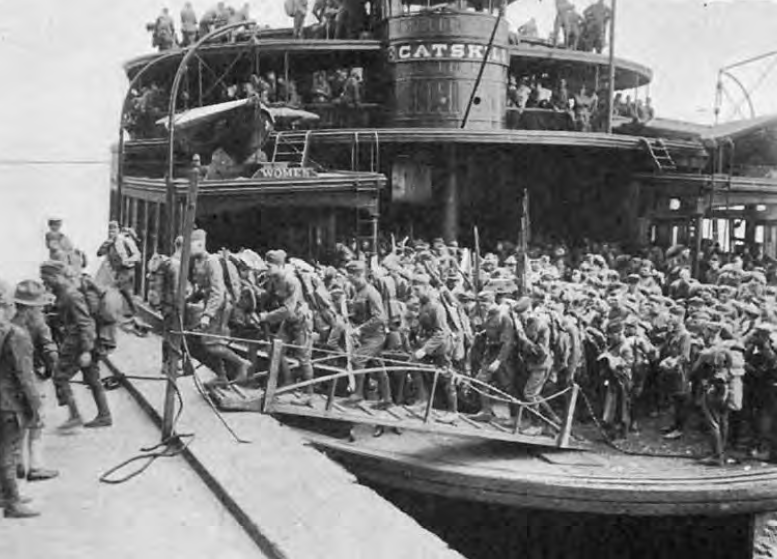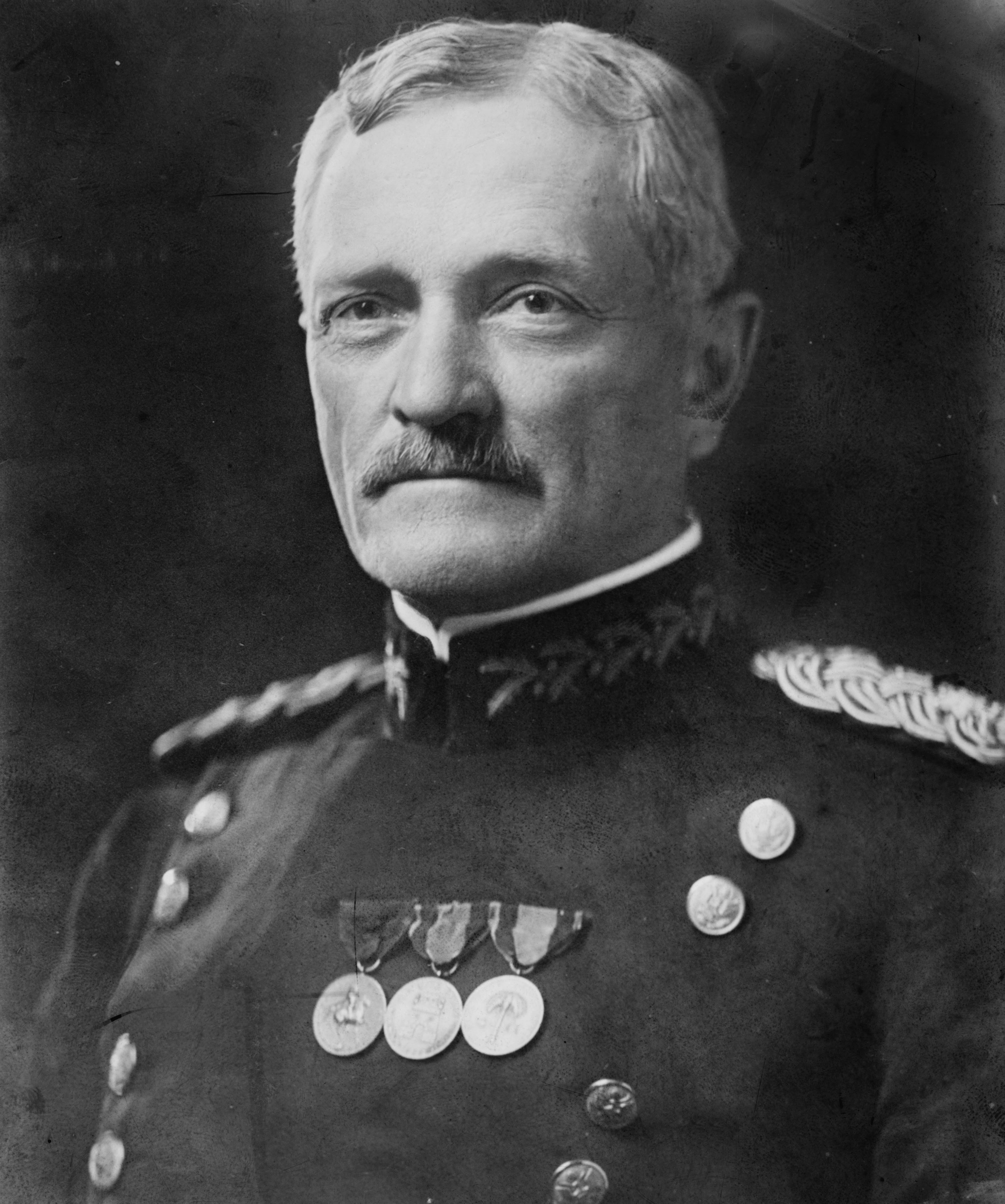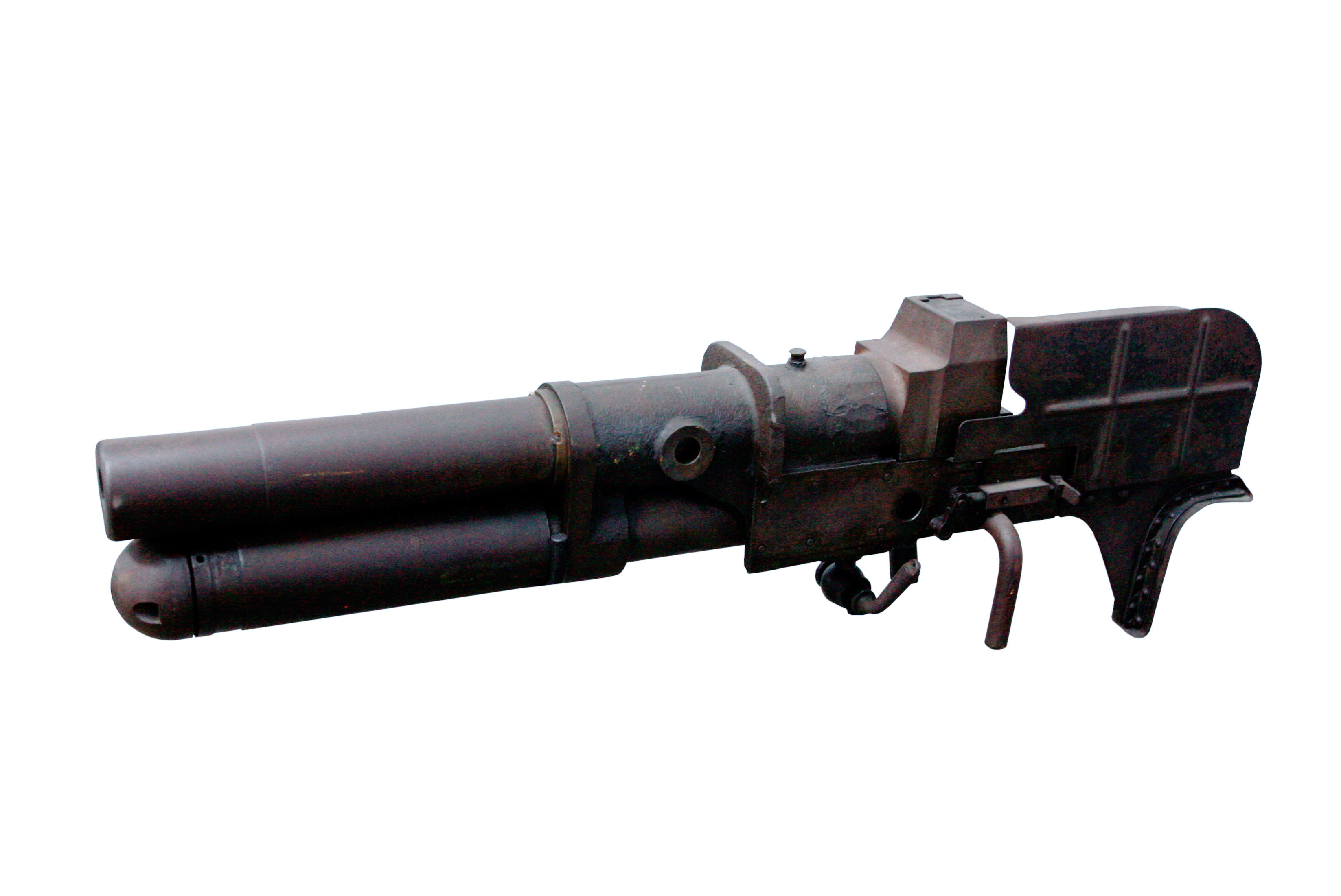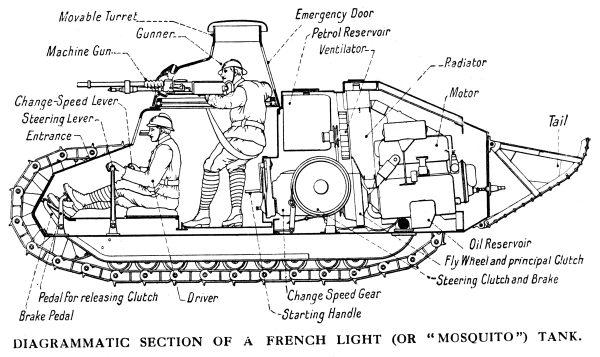|
Harold W. Roberts
Harold William Roberts (October 14, 1895 – October 6, 1918) was a United States Army corporal and a recipient of the United States military's highest decoration, the Medal of Honor, for his actions in World War I. Roberts, a tank driver, was moving his tank into a clump of bushes to afford protection to another tank which had become disabled. The tank slid into a shell hole, 10 feet deep, filled with water, and was immediately submerged. Knowing that only one of the two men in the tank could escape, Cpl. Roberts said to the gunner, "Well, only one of us can get out, and out you go," whereupon he pushed his companion through the back door of the tank and drowned. Early life Harold William Roberts was born in the Noe Valley area of San Francisco, California. Roberts' father was John Albert Roberts. Roberts' mother was Elfreda Josephine "Freda" Roberts. His father was a harness-maker and his mother was a housewife. While still a boy, his family survived the great San Francisco ... [...More Info...] [...Related Items...] OR: [Wikipedia] [Google] [Baidu] |
San Francisco, California
San Francisco, officially the City and County of San Francisco, is a commercial, Financial District, San Francisco, financial, and Culture of San Francisco, cultural center of Northern California. With a population of 827,526 residents as of 2024, San Francisco is the List of California cities by population, fourth-most populous city in the U.S. state of California and the List of United States cities by population, 17th-most populous in the United States. San Francisco has a land area of at the upper end of the San Francisco Peninsula and is the County statistics of the United States, fifth-most densely populated U.S. county. Among U.S. cities proper with over 250,000 residents, San Francisco is ranked first by per capita income and sixth by aggregate income as of 2023. San Francisco anchors the Metropolitan statistical area#United States, 13th-most populous metropolitan statistical area in the U.S., with almost 4.6 million residents in 2023. The larger San Francisco Bay Area ... [...More Info...] [...Related Items...] OR: [Wikipedia] [Google] [Baidu] |
Camp Merritt, New Jersey
Camp Merritt was a military base in Dumont and Cresskill, in Bergen County, New Jersey, United States, that was activated for use in World War I. It had a capacity for 38,000 transient troops and was one of three camps directly under the control of the New York Port of Embarkation. Two routes were used to transport troops, the first being local railroads which would carry the men South. The alternate route involved marching in contingents of two to three thousand men to the North-East and descending the Palisades. These men marched for an hour to board ferryboats at Old Closter Dock, Alpine Landing that took them to the piers at Hoboken, New Jersey, to board troop transports for Europe. Contingents would leave the camp for the landing at half hour intervals to board the ferries for the two hour trip to the embarkation piers where several transports might be loading simultaneously. There they would be joined by troops from Camp Mills and Camp Upton arriving by train at a termin ... [...More Info...] [...Related Items...] OR: [Wikipedia] [Google] [Baidu] |
Harold Roberts
{{hndis, Roberts, Harold ...
Harold Roberts may refer to: * Harold W. Roberts (1899–1918), United States Army soldier and recipient of the Medal of Honor * Harold Roberts (footballer) (1920–2007), English professional footballer * Harold Roberts (politician) (1884–1950), British Conservative Member of Parliament for Birmingham Handsworth 1945–1950 * Harold C. Roberts (1898–1945), United States Marine Corps officer See also *Harry Roberts (other) Harry Roberts may refer to: *Harry Roberts (cricketer) (1924–1995), English cricketer *Harry Roberts (criminal) (born 1936), English convicted of the Shepherd's Bush murders *Harry Roberts (footballer, born 1904) (1904–1968), English football d ... [...More Info...] [...Related Items...] OR: [Wikipedia] [Google] [Baidu] |
Forest Of Argonne
The Forest of Argonne () is a long strip of mountainous and wild woodland in northeastern France, approximately east of Paris. The forest measures roughly long and wide filled with many small hills and deep valleys formed by water run-off from the Aire River (France), Aire and Aisne (river), Aisne rivers rarely exceeding more than in elevation. Following the First World War, the landscape of the forest was forever changed as trench warfare led to parts of the forest being riddled with deep human-made trenches along with craters from explosives. The forest is bordered by the Meuse River on the west and rolling farmland and creeks to the east. The forest is largely oak, chestnut, and pine trees, and ferns cover much of the forest floor. Common animal life consists of wild boar, red deer, roe deer, hares, rabbits, foxes, and wildcat. History In 1792, Charles François Dumouriez outmaneuvered the invading forces of the Charles William Ferdinand, Duke of Brunswick, Duke of Bru ... [...More Info...] [...Related Items...] OR: [Wikipedia] [Google] [Baidu] |
Corporal Roberts FT-17 918
Corporal is a military rank in use by the armed forces of many countries. It is also a police rank in some police services. The rank is usually the lowest ranking non-commissioned officer. In some militaries, the rank of corporal nominally corresponds to commanding a section or squad of soldiers. The word is a contraction from the medieval Italian phrase ( f soldiers. While most Indo-European languages use this contraction, West Iberian languages use . Types * Lance corporal * * First corporal * Second corporal * Master corporal * Corporal major * Corporal of horse * Corporal of the field * Staff corporal By country Australia Corporal is the second lowest of the non-commissioned officer ranks in the Australian Army, falling between lance-corporal and sergeant. A corporal is usually appointed as a section commander, and is in charge of 7–14 soldiers of private rank. They are assisted by a second-in-command, usually a lance-corporal or senior private. A Corporal ... [...More Info...] [...Related Items...] OR: [Wikipedia] [Google] [Baidu] |
Battle Of Saint-Mihiel
The Battle of Saint-Mihiel was a major World War I battle fought from 12 to 15 September 1918, involving the American Expeditionary Forces (AEF) and 110,000 French troops under the command of General John J. Pershing of the United States against German positions. The U.S. Army Air Service played a significant role in this action.Hanlon (1998)''History of War'' (2007) This battle marked the first use of the terms "D-Day" and " H-Hour" by the Americans. The attack at the Saint-Mihiel salient was part of a plan by Pershing in which he hoped that the Americans would break through the German lines and capture the fortified city of Metz. It was the first large offensive launched mainly by the United States Army in World War I, and the attack caught the Germans in the process of retreating. This meant that their artillery was out of place and the American attack, coming up against disorganized German forces, proved more successful than expected. The Saint-Mihiel attack establishe ... [...More Info...] [...Related Items...] OR: [Wikipedia] [Google] [Baidu] |
American Expeditionary Forces
The American Expeditionary Forces (AEF) was a formation of the United States Armed Forces on the Western Front (World War I), Western Front during World War I, composed mostly of units from the United States Army, U.S. Army. The AEF was established on July 5, 1917, in Chaumont, Haute-Marne, Chaumont, France under the command of then-major general John J. Pershing. It fought alongside French Army, British Army, Canadian Army, British Indian Army, New Zealand Army and Australian Army units against the Imperial German Army. A small number of AEF troops also fought alongside Italian Army units in 1918 against the Austro-Hungarian Army. The AEF helped the French Army on the Western Front during the Third Battle of the Aisne, Aisne Offensive (at the Battle of Château-Thierry (1918), Battle of Château-Thierry and Battle of Belleau Wood) in the summer of 1918, and fought its major actions in the Battle of Saint-Mihiel and the Meuse-Argonne Offensive in the latter part of 1918. Formatio ... [...More Info...] [...Related Items...] OR: [Wikipedia] [Google] [Baidu] |
Hotchkiss Mle 1914 Machine Gun
The Mle 1914 Hotchkiss machine gun chambered for the 8mm Lebel cartridge became the standard machine gun of the French Army during the latter half of World War I. It was manufactured by the French arms company Hotchkiss et Cie, which had been established in the 1860s by American industrialist Benjamin B. Hotchkiss. The gas-actuated Hotchkiss system was first formulated in 1893 by Odkolek von Ujezda and improved into its final form by Hotchkiss armament engineers, American Laurence Benét and his French assistant Henri Mercié. The Mle 1914 was the last version of a series of nearly identical Hotchkiss designs, following the Mle 1897, Mle 1900 and the Mle 1909. The Hotchkiss Mle 1914 became the French infantry standard in late 1917, replacing the unreliable St. Étienne Mle 1907. The American Expeditionary Forces (AEF) in France also purchased 7,000 Mle 1914 Hotchkiss machine guns in 8mm Lebel, and used them extensively at the front in 1917 and 1918. Hotchkiss heavy machine gu ... [...More Info...] [...Related Items...] OR: [Wikipedia] [Google] [Baidu] |
Puteaux SA 18
The Puteaux SA 18 was a French single-shot, breech-loading cannon, used in World War I through World War II, primarily mounted on combat vehicles. It is a development of the Canon de 37 mm à tir rapide Modèle 1916 (SA 16), also produced by Puteaux. Technical details It was a simple, reliable weapon with a high rate of fire made possible by a semi-automatic breech system. While its maximum fire rate was 15 rounds per minute, its practical rate was 10 rounds per minute. After firing, the breech opened and ejected the used cartridge case automatically. The gun was operated by the gunner, who aimed it through a simple 1x direct scope separately attached to the left side of the weapon. It was found easy to use, with a low incidence of jamming. The barrel length was 21 calibres (L/21). It was primarily intended to be used against infantry and machine-gun nests; its low muzzle velocity made it unsuitable for use against armour. Although its armour penetration capabilities were p ... [...More Info...] [...Related Items...] OR: [Wikipedia] [Google] [Baidu] |
Renault FT
The Renault FT (frequently referred to in post-World War I literature as the FT-17, FT17, or similar) is a French light tank that was among the most revolutionary and influential tank designs in history. The FT was the first production tank to have its armament within a fully rotating turret.Although a rotating turret had been a feature of some earlier tank designs or prototypes, and had been incorporated in Armored car (military), armoured cars for several years, no tank with a turret had entered service. The Renault FT's configuration (crew compartment at the front, engine compartment at the back, and main armament in a revolving turret) became and remains the standard tank layout. Consequently, some armoured warfare historians have called the Renault FT the world's first modern tank. Over 3,000 Renault FT tanks were manufactured by France, most of them in 1918. After World War I, FT tanks were exported in large numbers. Copies and derivative designs were manufactured in the Un ... [...More Info...] [...Related Items...] OR: [Wikipedia] [Google] [Baidu] |






